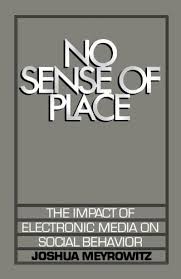As a Wal-Mart executive noted at a recent marketing conference, “the customer is in control,” meaning individuals now have social media power to disrupt a marketing campaign.
The recent uproar about data mining on Facebook and elsewhere can easily leave us with the impression that consumers not only have little privacy, but that they are also pawns in the hands of shrewd marketers. There is truth to these fears. Online users do have less privacy; and sometimes we are the victims of campaigns that can seem to make us easy marks. Russian online disinformation is, without doubt, a serious threat to our sovereignty. But as is true with so many claims about advertising and marketing, we often assume an organization or company has more control than is actually the case. Like all of us, advertisers have been brought low of internet contagion that sabotages their best efforts.
For example, several years ago the marketing staff managing the beer Bud Light decided to tinker with the labeling. Building on a campaign running in multiple media and using the slogan, “Up for Whatever,” the label on some products was redesigned to include an additional hashtag and bold letter wording that said “The Perfect Beer for Removing ‘No’ From Your Vocabulary for the Night.” Obviously, the campaign was meant to appear relevant and responsive to quips that fly between users of social media. But since beer drinkers are often younger adults, it might have been expected that a social media backlash could result. And it did. Complaints poured in. Anheuser-Busch-InBev was forced to formally apologize, acknowledging heightened sensitivities about unwanted sexual advances abetted by too much alcohol, especially on college campuses. New York Congresswoman Nita Lowey was one of many Americans to express their displeasure on Twitter. She asked followers to write the company “if you agree” that the “Up for Whatever” “campaign should promote responsible—not reckless—drinking.” Her hashtag was #NoMeansNo. In a follow-up e-mail to the New York Times she noted that “We need responsible companies to help us tackle these serious public health and safety problems, not encourage them.” That was enough for an Anheuser representative to admit that “the message missed the mark, and we regret it.”
The Customer is now in control.
To be sure, this was a small moment in the nation’s busy marketing landscape. But it is representative of how quickly a campaign that seeks to tie itself into social media can go off the rails. As a Wal-Mart executive noted at a recent marketing conference, “the customer is in control,” meaning that individuals now have the social media power to disrupt a marketing campaigns that might have once unfolded with no mechanisms for immediate public rejection.
With this view in mind, a couple of short observations:
- Trump the tweeter may his own worst enemy. When the time between a thought and its dissemination is nearly simultaneous, there are bound to be unanticipated and unwanted effects. His tweets are like firecrackers landing at the feet of revelers. A few may be delighted; most others are horrified.
- Strong opinions made anonymously generally deserve their fate of quickly disappearing in the internet maw.
- The old adage to never argue with an organization that buys ink by the barrel is no longer so accurate. Quarreling with a media outlet carries fewer risks.
- All of us want to believe–and most marketing organizations sell the idea–that there are clear pathways to managing public opinion. But social media contagion can be triggered by nearly anyone from almost any corner of the culture.
![]()







